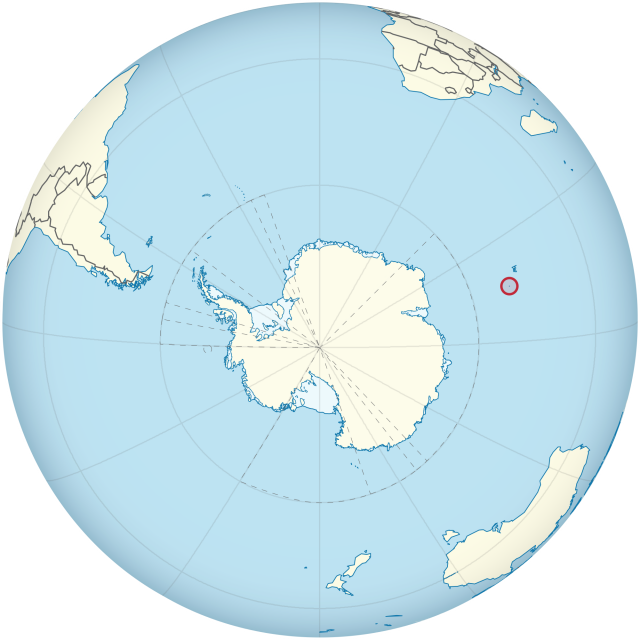Heard and McDonald Islands
TWO OF THE MOST isolated spots on the globe, the Heard and McDonald Islands have only been visited a few times, and much remains to be discovered about them. The islands are located at the bottom of the world, where the INDIAN OCEAN meets the Antarctic seas, and have recently been declared a United Nations UNESCO World Heritage site due to their pristine natural habitat, nearly untouched by human hands.
The first sighting of the larger island, Heard, is attributed to the British captain Peter Kemp in 1833, but also to the American captain John J. Heard, in 1853. Much smaller McDonald island, 27 mi (43.5 km) to the west, was spotted a year later by British captain William McDonald. Hunters, in the 1850s to 1870s, nearly depleted the islands of their population of varieties of seals (notably elephant seal and fur seal), king penguins and whales, but these populations have now mostly returned to their former numbers. To further protect this wildlife, the government of AUSTRALIA established the Heard Island and McDonald Islands Marine Reserve in 2002. Thirty-four species of bird come here to breed, including penguins, albatrosses, and giant petrels. Human visitors are tightly restricted to occasional scientific expeditions.

The islands, about 1,000 mi (1,700 km) off the coast of ANTARCTICA, are the most volcanically active in the sub-Antarctic region. They are rises on the Kerguelen Plateau, which also includes the Iles Kerguelens, about 434 mi (700 km) to the northwest (territory of FRANCE). Neither of the islands has much vegetation, though kelp is abundant offshore. Rain or snow and extensive cloud cover keep the islands very wet most of the year and are accompanied by nearly constant high winds. Heard Island is a circular volcanic cone, dominated by the Big Ben Massif topped by Mawson Peak, the only active volcano in Australian territory. A mountainous headland extends 6.2 mi (10 km) to the northwest (Laurens Peninsula), connected by a narrow ridge little more than 330 ft (100 m) wide. Heard is surrounded by numerous outlying rocks, islets and reefs. A few kilometers offshore are the Shag Islands.
About 80 percent of Heard is glaciated, with ice up to 495 ft (150 m) deep. Ice cliffs make up much of the coast, adding to the island's inaccessibility. The McDonald Island group is made up of one volcanic peak and several smaller rocky islets (Flat Island, Meyer Rock).
Much smaller than Heard, McDonald has been landed on only twice in its history, and very little is known about it. In fact, the size of McDonald seems to have recently doubled—from .39 square mi (1 square km) to an estimated 1 square mi (2.45 square km)—through a volcanic eruption sometime between 1997 and 2001, when changes were detected on a satellite photograph. It is believed that this eruption is continuing, radically altering the shape of McDonald Island.